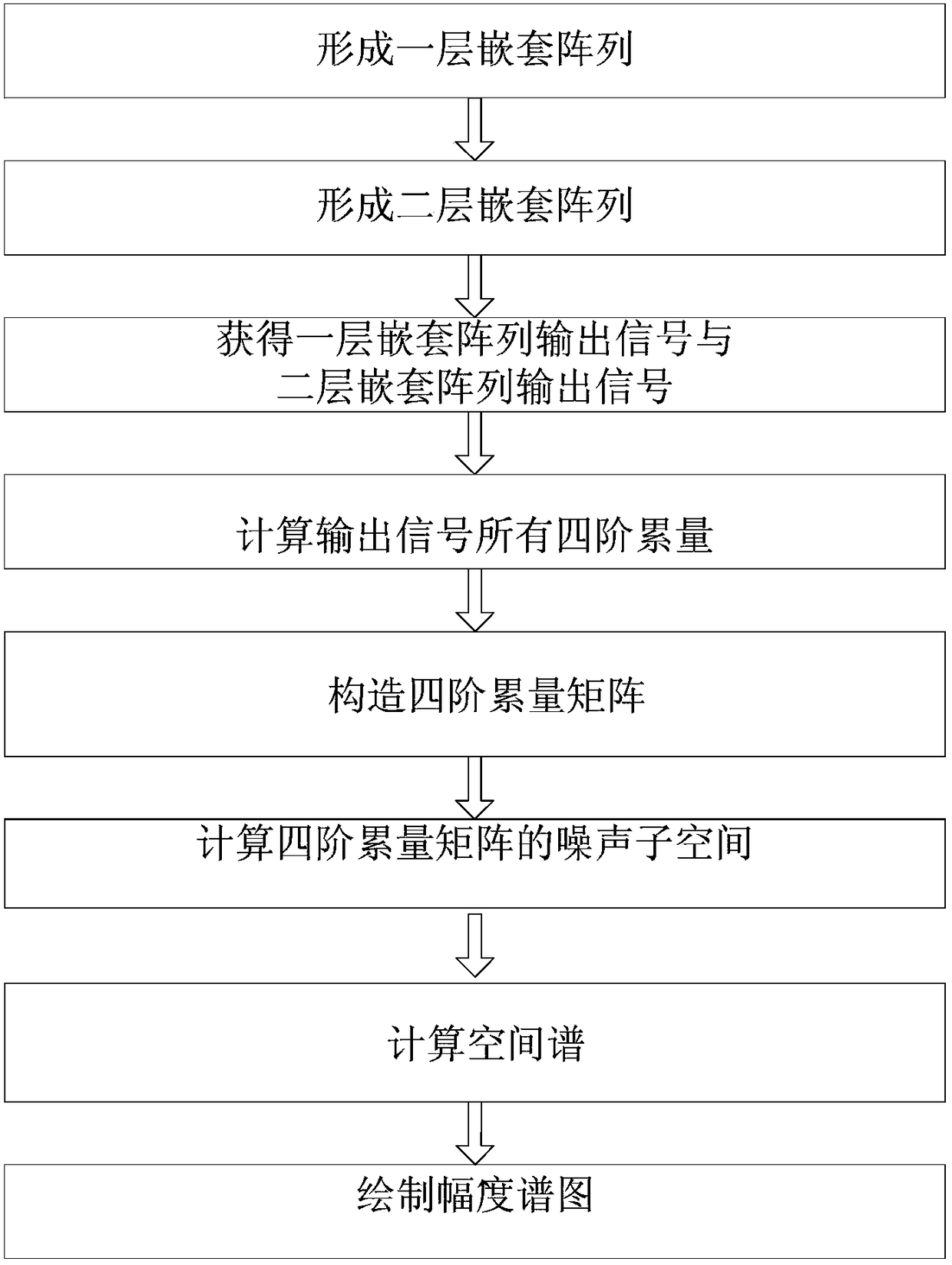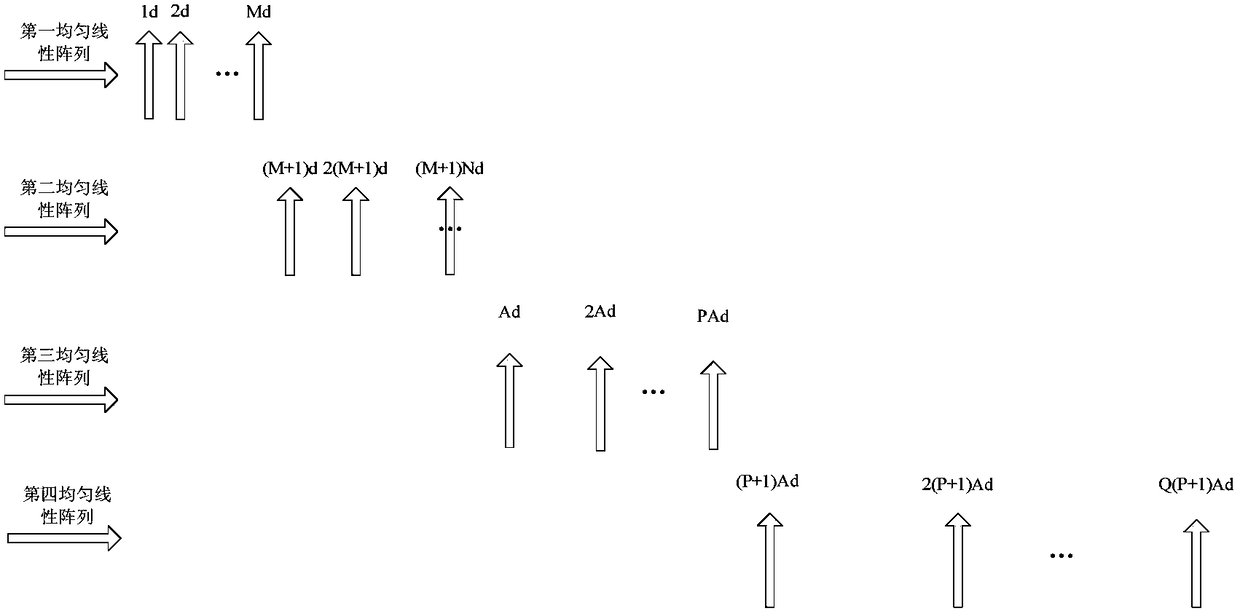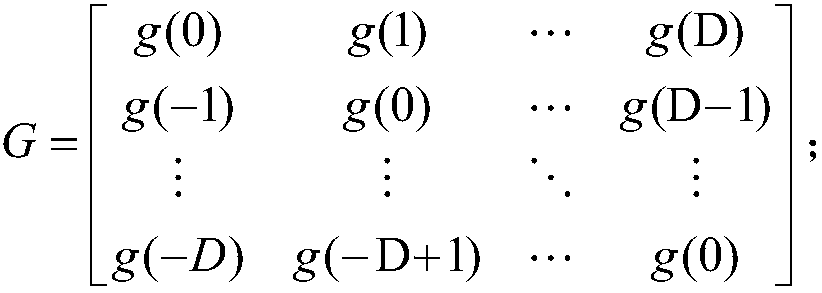A DOA Estimation Method for Nested Arrays Based on Fourth-Order Cumulative
A direction of arrival and array technology, applied in the field of signal processing, can solve the problems of resource waste in reconnaissance and positioning, the number of signals cannot meet the practical application, and the signal cannot be estimated, so as to improve the utilization rate of the array and reduce the number of array elements. , the effect of increasing the number of sources
- Summary
- Abstract
- Description
- Claims
- Application Information
AI Technical Summary
Problems solved by technology
Method used
Image
Examples
example 1
[0068] Simulation example 1. Construct a double-layer nested array structure.
[0069] 1.1) Utilize the first uniform linear array a and the second uniform linear array b to form a layer of nested arrays, set N=2, M=2, the first uniform linear array a contains 3 array elements, and the array element spacing is d, The second uniform linear array b contains 3 array elements, and the array element spacing is 3d, and the first array element of the first uniform linear array a is placed at 1d position;
[0070] 1.2) Calculate the number of virtual array elements A=2MN+2N-1=11 of a layer of nested array formed by the first uniform linear array a and the second uniform linear array b;
[0071] 1.3) Utilize the third uniform linear array c and the fourth uniform linear array f to form a two-layer nested array, set P=2, Q=2, the third uniform linear array c contains 2 array elements, and the array element spacing is 11d, The fourth uniform linear array f contains 2 array elements, and...
example 2
[0074] In simulation example 2, all virtual elements of the double-layer nested array are calculated according to the fourth-order cumulant.
[0075] 2.1) Let the element position of a layer of nested array formed by the first uniform linear array a and the second uniform linear array b be [1, 2, 3, 6]d;
[0076] 2.2) Set the element position of the two-layer nested array formed by the third uniform linear array c and the fourth uniform linear array f as [11, 22, 33, 66]d;
[0077] 2.3) Calculate the virtual arrays formed by each array element in the first-level nested array and each array element in the second-level nested array as [12,13,15,17]d, [23,24,26,28] d, [34,35,36,39]d, [67,68,70,72]d;
[0078] 2.4) According to the method and principle of the fourth-order cumulant calculation, use the above-mentioned virtual arrays to generate all the final virtual array elements, and the results are shown in Table 1.
[0079] Table 1 All virtual elements of double-layer nested a...
PUM
 Login to View More
Login to View More Abstract
Description
Claims
Application Information
 Login to View More
Login to View More - Generate Ideas
- Intellectual Property
- Life Sciences
- Materials
- Tech Scout
- Unparalleled Data Quality
- Higher Quality Content
- 60% Fewer Hallucinations
Browse by: Latest US Patents, China's latest patents, Technical Efficacy Thesaurus, Application Domain, Technology Topic, Popular Technical Reports.
© 2025 PatSnap. All rights reserved.Legal|Privacy policy|Modern Slavery Act Transparency Statement|Sitemap|About US| Contact US: help@patsnap.com



